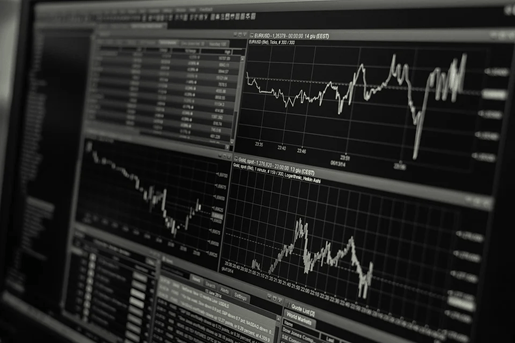
Trading stocks, commodities, or foreign exchange has never been easier thanks to the advancement of at-home technology. All that is required to trade is a computer that is hooked up to the internet and access to one of the many brokerage platforms.
More important than any piece of technology is the desire to succeed in trading. After all, the sole purpose of trading for a living is to get rich. But if trading instruments were that easy and straightforward, everyone would be doing it.
The unfortunate reality is that the vast majority of traders end up failing for one reason or another. But some that are quite careless and not fully appreciating risks associated with margin could end up losing more money than they had initially invested.
Forex Is The King Of Markets
The foreign exchange market is by far the largest financial market in the world as more than $6.5 trillion change hands on a daily basis. By comparison, the Nasdaq Stock Exchange, home to multiple companies valued at more than $1 trillion each, trades around $200 billion worth of shares daily.
The reason why the forex market dwarfs other exchanges in size is simple. On a daily basis, global banks of all shapes and sizes are busy trading with each other on behalf of their clients or from an internal trading desk.
Add to that central banks looking to intervene in the market to appreciate or depreciate their currency. And then the world’s largest hedge funds are looking to make speculative trades while multinational corporations need to switch large amounts of money on a daily basis or to hedge against any large exposure.
At the end of the food chain so to speak is the individual regular people trading from home. Often dubbed as simply retail traders, this is the smallest group of entities within the foreign exchange universe. Even though they are up against some of the world’s largest financial entities, there is still profit to be made.
Retail traders make use of different strategies to mostly buy and sell currencies on the same day. On rare occasions, traders might hold a currency overnight but this is not the norm. Doing so goes against the concept of day trading — as the name implies. But keeping a currency for longer than 24 hours is likely to incur interest charges and other fees.
A Global Opportunity
The forex market operates 24 hours a day so traders across the world are guaranteed action at all times of the day. Which currency pairs that people trade mostly depends on where they live and what time they want to trade.
Most traders have family obligations so trading at all hours of the night and resting during the daytime might not be feasible.
During London business hours, the most actively traded pairs typically include the British pound (GBP), euro (EUR), and Swiss franc (CHF).
As such, traders in or near London will typically focus most of their attention on the GBP/EUR, GBP/CHF pairs, and to a lesser degree the GBP/USD (U.S. dollar) and GBP/JPY (Japanese Yen).
It isn’t overly complicated for traders worldwide to quickly figure out what currency pairs are ideal to trade. The answer is mostly within one or two hours of their home time zone.
Profit Expectations
Forex traders that are very disciplined and understand how to cut losses quickly and maximize profits can do quite well trading for a living. Naturally, getting to this stage will prove to be quite difficult with many setbacks along the way.
Traders must put in weeks if not months of research and preperations. They must study the charts, understand different technical analysis tools, and be disciplined. Perhaps more important, they must understand economic events and know how to react to surprise announcements, such as an unexpected interest rate change or a change in tone from a key central bank figure.
Generally speaking, a trader with a decent win rate of 55% (that is for every 100 traders, 55 are profitable) can make decent money if they are disciplined with cutting losses. Typically, a stop-loss order is placed five pips from the trade entry point and a target profit goal is eight pips away.
What this means is each trade should have a potential reward of 1.6 times greater than the risk. This ensures that winning trades are indeed winners and one bad trade won’t fully offset a good trade.
Putting some actual numbers should yield the following results after 100 trades:
Fifty-five good trades generate a profit of £80 each for a total profit of £4,400.
Forty-five bad trades each came with a loss of £50 for a total loss of £2,250.
The trader’s gross profit is £2,150 and assumes no commissions and other fees. If the trader’s account size starts at £5,000 then this is a pretty decent return.
Conclusion: Play The Long Game
The best part about being a consistently profitable trader is the returns can be compounded.
After starting with an account size of £5,000 in the first month, the trader’s profit of £2,150 is kept in the trading account. The trader then starts a new month with £7,150 and a similar win rate and risk management strategy should in theory translate to a profit of £3,074.50.
As this process is repeated over and over again, a good trader will start to make great profits in a few short months. After that, the sky’s the limit.
